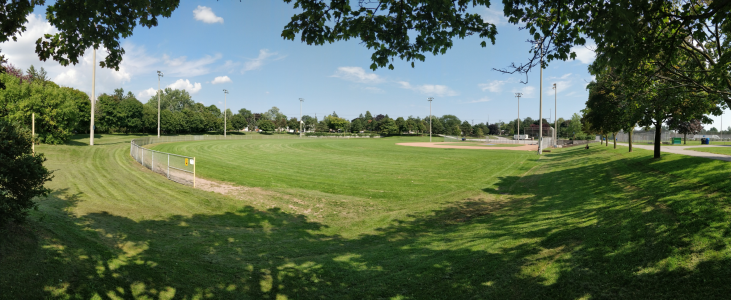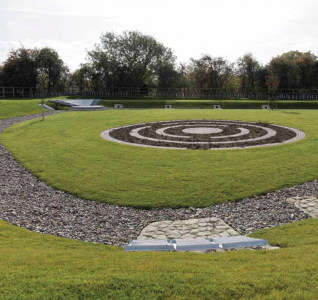Difference between revisions of "Dry ponds"
Jump to navigation
Jump to search
Jenny Hill (talk | contribs) (→Design) |
Jenny Hill (talk | contribs) m (→Modeling) |
||
| Line 21: | Line 21: | ||
{{:Dry ponds: TTT}} | {{:Dry ponds: TTT}} | ||
[[category: Modeling]] | |||
==Gallery== | |||
{{:dry ponds: Gallery}} | |||
Revision as of 02:14, 3 November 2017
Also known as infiltration basins.
Overview[edit]
Dry ponds are recommended as flood control structures to accommodate occasional excess overflow downstream of other structural BMPs. They should be integrated into the landscape as useful, accessible public space.
Design[edit]
Sizing
The surface storage volume of a dry pond (Ap) is simply determined:
Where:
- RVCT = Runoff volume control target (mm)
- Ac = Area of the catchment (m2)
- q = infiltration rate (mm/hr)
- t = drawdown time (hrs)
Modeling[edit]
| Stage Storage | |
|---|---|
| Name | Important to have a unique name, to connect it with the catchment area |
| Storage type | Dry detention ponds |
| Bottom elevation (m) | This is important to correspond with other components, e.g. when the overflow is coupled to another BMP within a treatment train |
| Maximum depth (m) | |
| Lined/unlined | Unlined (ideally) |
| Underlying soil | Choose from five; sandy soils drain more quickly. |
| Evaporation factor | ? |
| Suction head (mm) | ? |
| Saturated conductivity (mm/hr) | ? |
| Initial soil moisture deficit (fraction) | ? |
| Curves | |
| The Curves table is designed to accommodate the side slopes. The top line begins at 0 m, with subsequent depths in the following lines. | |
Gallery[edit]
Stormwater lagoon, Wilmhurst Road, Warwick. UK. Photo credit: Robin Stott
Dry polder northwest of Vincencov, Prostějov. Czech Republic. Photo credit: Jiří Komárek








